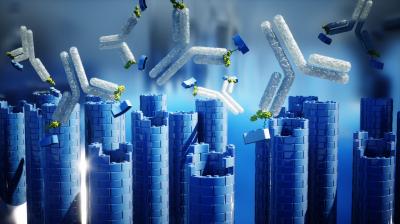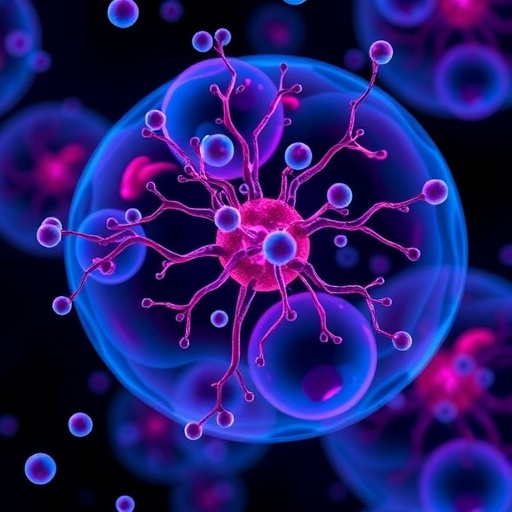
Credit: Ella Marushchenko
What if we could use antibodies as functional tools for nanotechnology applications? A group of researchers at the University of Rome Tor Vergata started from this simple question and the results of their research are now published in Nature Communications.
Nanotechnology enables the design and fabrication of molecular structures of nanoscale dimensions that hold a great potential for several applications in the near future, including biomedicine. A convenient way to make such nanostructures is to employ synthetic DNA as the building material. These days it is possible to design and synthetize DNA strands that, by simple and predictable interactions, bind to each other just like Lego bricks, and form beautiful 2D and 3D geometries in a very controllable and precise fashion. To date, many nanoscale shapes have been created using DNA bricks, ranging from nanoboxes to more complex geometries, such as a nanoscale Monalisa. To allow potential applications of these nanostructures, however, it would be extremely important to design them so that their assembly and disassembly could be guided by molecular cues of clinical relevance.
Now a research group at the University of Rome, Tor Vergata has shown that it is possible to recruit antibodies as molecular builders to build or dismantle DNA nanostructures.
The function of antibodies in our body is to recognize and bind to a specific target (i.e. the antigen), which is often a foreign molecule or protein. For this reason, antibodies are ideal biomarkers because they are produced by our body to target foreign molecules in our blood. Each antibody has its own target and therefore does its job in a highly specific and precise way.
“This project started a couple of years ago when we realized that this amazing functionality of antibodies (recognize and bind to a specific molecule) could be repurposed for nanotech applications”, says Francesco Ricci, professor at the University of Rome Tor Vergata and senior author of the manuscript. “We had the idea of utilizing antibodies as molecular workers to build nanoscale structures”.
“To do this, we employed DNA bricks that bind to each other and form nanostructures of tubular shape”, says Simona Ranallo, a post-doc researcher in the group of Prof. Ricci and first author of the manuscript, “we then re-engineered such bricks with recognition tags (antigens) so that their assembly is initiated by a specific antibody. The nanotube structure can thus only built up when the antibody is present in the sample!”
“Antibodies are highly specialized workers” adds Ricci, “there are thousands of distinct antibodies in our body each recognizing its own antigen. We took advantage of this amazing feature and designed different bricks that can assemble with different specific antibodies”.
“We took a step further” continues Ricci, “we engineered our DNA bricks so that not only they assemble into the desired nanostructure in the presence of a specific antibody, but they can also be completely dismantled by a second antibody worker”.
This strategy demonstrates the possibility to design intelligent nanostructures that can be built and destroyed in the presence of a specific biomarker. This could have potential applications in the biomedical field, either in diagnostics or therapeutics.
###
Media Contact
Francesco Ricci
[email protected]
0039-067-269-4422
Related Journal Article
http://dx.




